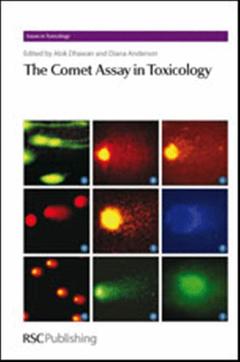Description
Comet assay in toxicology
Authors: DHAWAN Alok, ANDERSON Diana
Language: English
Subjects for Comet assay in toxicology:
Approximative price 193.42 €
Subject to availability at the publisher.
Add to cart
Publication date: 08-2009
478 p. · Hardback
478 p. · Hardback
Description
/li>
The vast number of chemicals existing or being added into the environment, have globally aroused great concern regarding their adverse effects in human population. Development and validation of sensitive and better test systems which can assess the adverse effects of chemicals at an early stage for intervention strategies to be implemented in time is currently in progress. This book documents the latest research and showcases the versatile, state-of-the-art technique - the Comet assay - in the field of modern toxicology. The assay is a simple, sensitive rapid and visual technique for the quantitative and qualitative assessment of DNA damage in single cells. The Comet Assay in Toxicology is the first book of its kind to be devoted exclusively to the Comet assay and its applications as an important tool in modern toxicology. This multi-author book will serve as both a reference and a guide to investigations in the biomedical, biochemical and pharmaceutical sciences. Written by investigators from the fields of genetic toxicology and human epidemiology, the authors have first-hand knowledge from their chosen sub-specialities and are active contributors to the peer-reviewed scientific literature. The book is divided into five major sections, reflecting the range of interest in the exploitation of this assay. The book's scope begins with an introduction section reviewing its genesis for those new to the technique and the current knowledge of the various fields in which it finds wide acceptance. This section sets the scene by explaining why the assay has become the most sensitive and sought after assay in modern toxicology. Next is a whole section that considers various procedures being followed to assess different types of DNA damage in various cell types and is contributed by experts in the respective fields. The third section puts together the specific applications of the assay in the diverse fields ranging from genetic toxicity testing to human monitoring, and environmental toxicology. The fourth section consists of the guidelines and recommendations for the conduct of the assay in in vitro and in vivo systems, based on the recommendations of the International Workgroups on genotoxicity test procedures. Finally, the book draws to a close with an assessment of the statistics used for the understanding of the data generated by the assay. This is a unique reference book as it provides the scientific community with the advances in Comet assay as well as its applications. It also incorporates a detailed section with instant and comprehensive information on the procedure of the assay and the latest protocols being used worldwide as well as statistical analyses to be followed. The book is aimed at students as well as scientists in the area of molecular epidemiology and genetic toxicology.
© 2024 LAVOISIER S.A.S.

